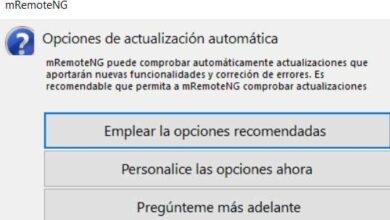How to Create and Run a Macro in PowerPoint Step by Step

Power Point is one of the most widely used Microsoft tools in the world. It allows you to create easily colorful presentations , it has a variety of fonts, clipart and a large number of templates you can download and add to PowerPoint . It is also characterized by its original transitions and animations that make presentations more dynamic.
In its latest updates, PowerPoint gave way to adding 3D images to give more quality to the presentations.
The macros are one of the most useful tools of Power point because they can help us to create or create presentations very easily.
What are macros?

A macro is a Microsoft dataset , that is, a series of steps that are stored and can be activated with a control key and a letter.
What are macros used for?
Its function is to facilitate all tasks that require the use of many keys or commands, such as creating a footer, changing the line spacing, creating a header or adding indents to a paragraph.
Macros are available in many Microsoft Office tools such as Excel, Power Point, OneNote, and you pouvez have create macros in Word .
Steps to create and run a macro in Power Point
Next, we'll show you how to create and run a macro in Power Point. And we remind you that you can put animations and transitions to Power Point slides. However, to create a macro, there is only one way to create them using Visual Basic for Apps (VBA).

Step 1: go to the "Developer" tab
Click on the button "Office" in the left corner of the window. Then click on Power Point 'Options'.
Once the PowerPoint options are open, select the "Popular" category, then check the box next to the option "Show developer tabs". Then click “OK” and the Developer tab should already be visible.
Step 2: enable macros
Power Point is configured so that all macros are disabled by default, so virus infections are avoided. However, if a reliable source is chosen as macros, there is no need to worry.
Either way, you can use an antivirus and scan macro files before putting them to work, then to enable macros just click "Macro Security" in the tab "Programmer".
Step 3: Adjust macro security settings
Once the option "Macro security" was clicked , a "Trust Center" window will appear. You need to make sure that the “Macro Settings” option has been selected.
Then tick the boxes next to it of options "Activate all macros" and "Trust access to the object model of the VBA project » . Click "OK" when finished.
Step 4: Save as a presentation that supports macros
Click the “Desktop” button and choose other formats under “Save As”. A shortcut to access this option more easily is to press the F12 key.
Then you need to enable the option “Power Point enabled for presentation macros” in the drop-down list next to “Save as type”. Click on "Record".
Step 5: Name them and place the codes
Open the tab 'Developer' and click on the 'Macros' button. When the macros appear, it is time to give them a name, then you should click “Create” when you are done. The Virtual Basic “Editor” window will appear.
All the commands you want perform or work in the macro must be written between commands "Sub" and "EndSub" . Remember that you can paste macros already created by other people or you can create them yourself.
Step 6: Name the file
You must first write a quotation mark to surround the name of the path of the file, after having already placed the desired name, "HTLM" is written at the end because it will be saved in this format.
Step 7: Finish and Save
After typing the name du file, press "Ctrl + S" or you can press "Save" from the "File" menu of the toolbar.
We hope this tutorial you was helpful and that with the help of macros it will be much easier for you to create creative PowerPoint slides with professional design.




